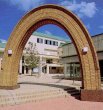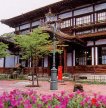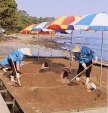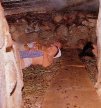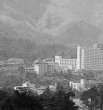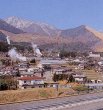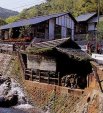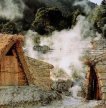- 生活
-
子育て
-
妊娠・出産
妊娠の届出・母子健康手帳 伴走型相談支援(出産・.. べっぷ出産・子育て応援.. 家庭訪問 産後ケア事業 幼児健康診査 育児相談・発達相談 全て表示
-
手当・助成
児童手当(令和6年10.. 児童扶養手当(所得制限有) 特別児童扶養手当(所得.. 別府市子ども医療費 非課税世帯小中学生の通.. 課税世帯小中学生の通院.. ひとり親家庭の医療費助成金 全て表示
-
保育・幼児教育
令和7年度 認可保育所.. 令和6年度 認可保育所.. 認可保育所・認定こども.. 幼児教育・保育の無償化 第2子以降3歳未満児の.. 別府市内の教育・保育施設 別府市立保育所の給食 全て表示
-
放課後児童クラブ
-
こどもの居場所(こども食堂等)
-
支援センター・児童館等
子育て支援センターの利用 南部子育て支援センター.. 南部子育て支援センター.. 北部子育て支援センター.. 北部子育て支援センター.. 西部子育て支援センター.. 西部子育て支援センター.. 全て表示
-
ひとり親家庭の方へ
-
こども家庭センター(相談支援)
別府市こども家庭センター 弁護士による専門相談 伴走型相談支援(出産・.. 育児相談・発達相談 子育て支援相談(家庭児.. 児童虐待に関する相談窓口 知っていますか?「ヤン.. 全て表示
-
児童虐待に関する相談窓口
児童虐待に関する相談窓口 児童相談所全国共通ダイヤル 体罰等によらない子育て.. 子育て支援相談(家庭児.. 別府市要保護児童対策地..
-
子育て支援
子育てガイドブック 一時預かり事業 別府市ファミリー・サポ.. 別府市こども家庭センター 別府市子育て短期支援事業 家庭訪問型子育て支援 .. 赤ちゃんの駅 全て表示
-
その他の事業
三世代同居世帯・子育て.. 別府市子ども・子育て支.. 別府市保育士等就労奨励.. 保育士修学資金・保育士.. 別府市巡回支援専門員整.. 別府市と一般社団法人D.. こども見守りシステム
-
申請書ダウンロード
-
-
学習
-
教育委員会
-
学校
公立小学校一覧 公立中学校一覧 小・中学校情報 市立高等学校 幼稚園情報 就学援助・奨学金・学校区他 学校給食 全て表示
-
教育総合
-
生涯学習
別府のことをもっと知ろ.. 別府市立図書館 地域教育力活性化事業 別府の社会教育 社会教育関係団体 子どもの読書活動推進 別府市立少年自然の家「.. 全て表示
-
文化財
-
文化活動
姉妹都市英国バース市中.. 別府市文化活動育成・奨.. 別府市民の海外留学奨励金 外国人留学生の地域活動.. 別府アルゲリッチ音楽祭 別府市民フィルハーモニ.. マーチング・カーニバル 全て表示
-
講座・イベント
社会教育課主催講座 公民館 開催講座 ふれあい広場サザンクロ.. 別府市美術館 展覧会 別府市美術館 主催講座 別府市二十歳のつどい(.. 外国人とのコミュニケー.. 全て表示
-
申請書ダウンロード
-
-
産業
-
観光
別府市公式観光情報We.. 別府市公式観光情報We.. 別府市公式観光情報We.. 観光統計 大分県国際観光船誘致促.. 別府市無料公衆無線LA.. 別府市観光LINEアカ.. 全て表示
-
温泉
市営温泉 別府八湯ガイド 温泉百科 別府温泉-世界の温泉地.. 温泉研究機関 よくあるお問い合わせ 別府市温泉マネジメント.. 全て表示
-
新湯治・ウェルネス
新湯治・ウェルネスツー.. 別府市新湯治・ウェルネ.. 新湯治・ウェルネス懇談会 新湯治・ウェルネス事業.. 新湯治・ウェルネス事業..
-
競輪場
-
産業振興
中小企業者向け支援 労働就労支援 融資制度 事業承継 別府ツーリズムバレー 創業支援・スタートアッ.. 企業誘致 全て表示
-
農林水産
由布岳・鶴見岳外登山規.. サクラを「てんぐ巣病」.. 別府市ふれあい農園(市.. 森林の土地所有者となっ.. 伐採及び伐採後の造林の.. 電気柵に関する注意喚起 人・農地プラン 全て表示
-
農業委員会
別府市農業委員会倫理規程 別府市農業委員会委員・.. 別府市農業委員会総会 別府市農地賃借料情報の提供 農地法第3・4・5条の.. 農業委員会公式インスタ.. 農地転用の手続き 全て表示
-
環境
-
入札・契約
-
申請書ダウンロード
-
-
市政
-
市の概要
別府市の概要 別府市の人口 別府市の指定・宣言 姉妹・友好・国際交流都.. 国際特別都市建設連盟 名誉市民・功労表彰 別府市制100周年記念
-
市の組織
-
広報・広聴
市報べっぷ 別府市行事カレンダー 別府画像ライブラリー Thank You f.. 別府市役所防災スタジオ.. 別府市後援等名義使用及.. まちづくり出前トーク 全て表示
-
住居表示
-
デジタルファースト
DF(デジタルファース.. いかなくていい市役所 市民のデジタル化を支援.. またなくていい市役所 行政運営の変革 情報が直接とどく市役所
-
各種計画
別府市総合計画 地域再生計画 別府市総合戦略 大分都市広域圏形成に向.. 別府市公共施設マネジメント 別府市役所庁舎等検討委員会 別府市国土利用計画 全て表示
-
行政改革
-
財政
市の財政計画 市の予算(当初予算) 市の予算(補正予算) 市の決算 新地方公会計制度による.. 健全化判断比率・資金不.. 市交際費 全て表示
-
統計・法制
別府市例規集 情報公開・個人情報保護制度 別府市の統計データ 登録統計調査員 募集 「令和7年国勢調査」の.. 【注意喚起】統計調査を.. 令和6年全国家計構造調..
-
人事・行政
別府市役所の人事・働き.. 職員採用情報 別府市人事行政の運営等.. 別府市の給与・定員管理等 別府市人材育成基本方針 職員の退職管理 別府市特定事業主行動計.. 全て表示
-
公民連携事業
ニュース&トピックス 公民連携(PPP)に取.. べっぷ公民連携ガイドライン PPP可能性リスト(未.. 別府市跡地等利活用方針 サウンディング調査(対.. ネーミングライツ事業 全て表示
-
移住
-
ふるさと納税(湯のまち別府ふるさと応援寄附金)
寄附の申込方法等 別府市のふるさと納税が.. 寄附金の活用方法 別府市と大学の連携事業 税制上の優遇措置 お礼の記念品 ふるさと納税返礼品提供.. 全て表示
-
スポーツ
別府市スポーツ振興奨励金 別府市スポーツキャンプ.. スポーツ・イベント案内 動画「別府市“太陽のう.. ホームタウンチーム「ヴ.. 別府市スポーツ推進計画 スポーツDXによる地域.. 全て表示
-
公売情報
-
広告収入事業
-
男女共同参画
男女共同参画のまち「べ.. 困難な問題を抱える女性.. 配偶者やパートナーから.. 別府市男女共同参画セン.. 婚活サポート事業 別府市男女共同参画セン.. 大分県パートナーシップ.. 全て表示
-
人権
特定の民族や国籍の人々.. 別府市人権教育学級 別府市人権教育及び人権.. 別府市人権教育・啓発実.. 人権問題に関する市民意.. 人権・部落差別問題啓発事業 別府市人権啓発センター.. 全て表示
-
市議会
-
監査
-
別杵速見地域広域市町村圏事務組合
-
申請書ダウンロード
-
-
施設
-
市役所・出張所
-
消防
-
公民館
地区公民館等の利用申込 別府市中央公民館 別府市北部地区公民館 別府市西部地区公民館 別府市中部地区公民館 別府市南部地区公民館 別府市朝日大平山地区公民館 全て表示
-
幼稚園・学校・教育施設
-
文化・コミュニティ施設
別府市市民会館 別府市立図書館 別府市美術館 別府市人権啓発センター 浜田温泉資料館 別府市国際交流会館 別府市まちなか交流館 全て表示
-
スポーツ施設
別府市営体育施設利用者.. 市営スポーツ施設のご利.. 別府市総合体育館「べっ.. 別府市民体育館 実相寺多目的グラウンド.. 実相寺パークゴルフ場 実相寺サッカー競技場・.. 全て表示
-
子育て施設
-
保健・福祉施設
-
水道・下水道
-
公園・駐車場
別府公園 南立石公園 鉄輪地獄地帯公園 上人ヶ浜公園 的ヶ浜公園 南立石緑化植物園 みど.. 別府市ドッグラン 全て表示
-
ごみ・環境・墓地
-
産業・観光
地獄蒸し工房 鉄輪 RECAMP 別府志高湖 湯けむり展望台 十文字原展望台 別府市竹細工伝統産業会館 別府競輪場 別府市公設地方卸売市場
-
市営温泉
-
施設のご利用
-
申請書ダウンロード
-
- 防災・消防
- 観光情報
- 検索
- 生活
- 届出・証明
- マイナンバー制度・マイナンバーカード
- 税金・税証明・債権管理
- 国民健康保険・年金・介護保険
- 健康・医療
- 福祉
- 環境・ごみ
- 住まい・都市
- 協働のまちづくり
- 防犯・安全・交通
- 消費生活・相談
- 選挙
- For Foreign Residents
- 申請書ダウンロード
- 子育て
- 妊娠・出産
- 手当・助成
- 保育・幼児教育
- 放課後児童クラブ
- こどもの居場所(こども食堂等)
- 支援センター・児童館等
- ひとり親家庭の方へ
- こども家庭センター(相談支援)
- 児童虐待に関する相談窓口
- 子育て支援
- その他の事業
- 申請書ダウンロード
- 学習
- 産業
- 市政
- 市の概要
- 市の組織
- 広報・広聴
- 住居表示
- デジタルファースト
- 各種計画
- 行政改革
- 財政
- 統計・法制
- 人事・行政
- 公民連携事業
- 移住
- ふるさと納税(湯のまち別府ふるさと応援寄附金)
- スポーツ
- 公売情報
- 広告収入事業
- 男女共同参画
- 人権
- 市議会
- 監査
- 別杵速見地域広域市町村圏事務組合
- 申請書ダウンロード
- 施設
- 市役所・出張所
- 消防
- 公民館
- 幼稚園・学校・教育施設
- 文化・コミュニティ施設
- スポーツ施設
- 子育て施設
- 保健・福祉施設
- 水道・下水道
- 公園・駐車場
- ごみ・環境・墓地
- 産業・観光
- 市営温泉
- 施設のご利用
- 申請書ダウンロード
- 防災・消防
- 観光情報
- English
- 한국어
- 簡体中文
- 繁體中文
- 分類から探す
- 組織から探す
- 人生のできごとから探す
- 各課お問い合わせ先一覧
- メールでのご意見・お問い合わせ




